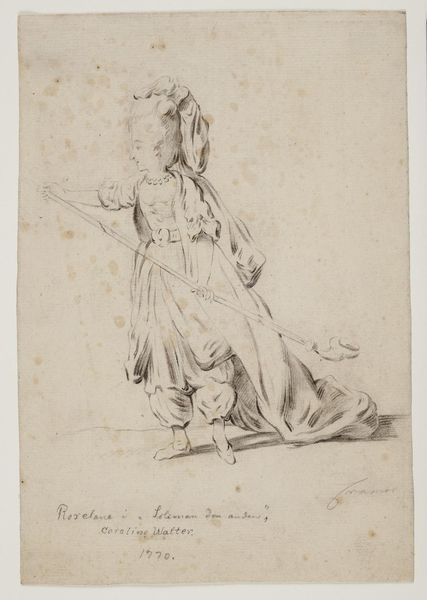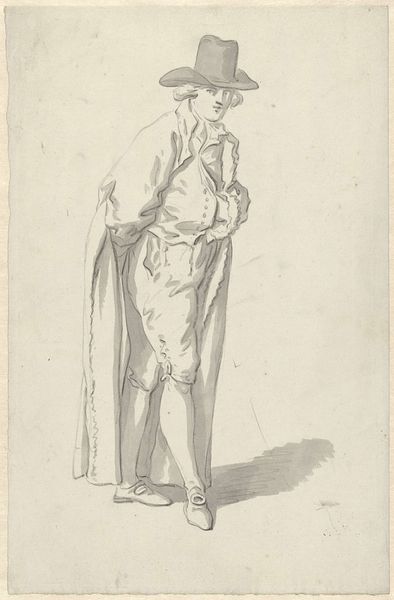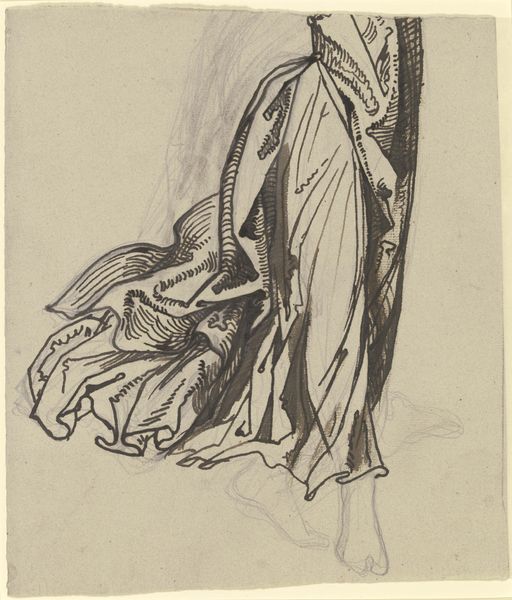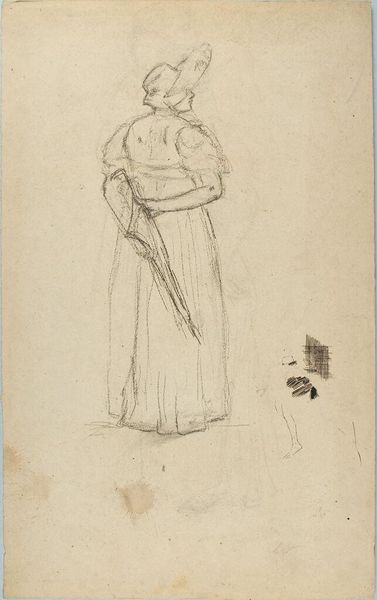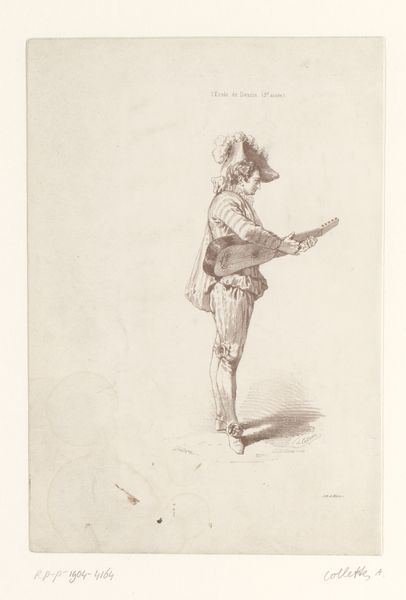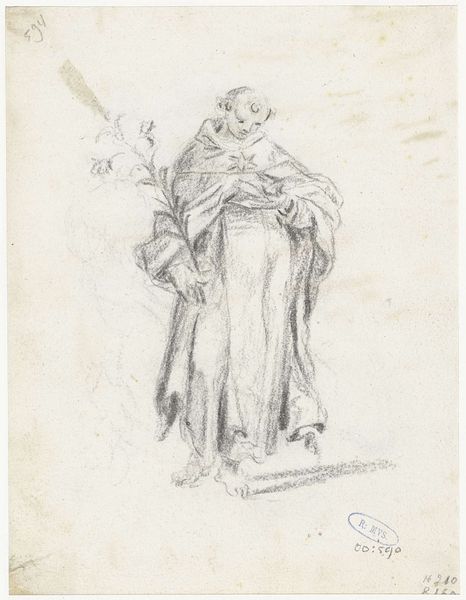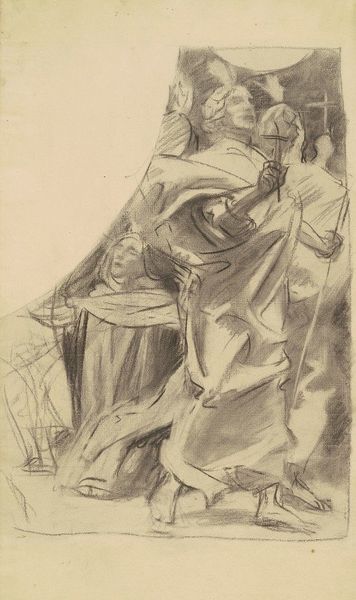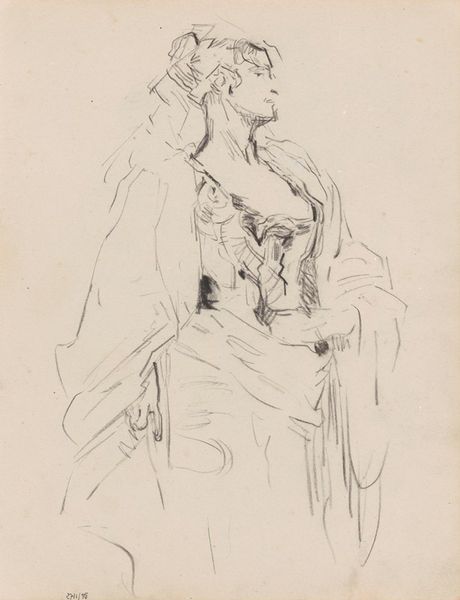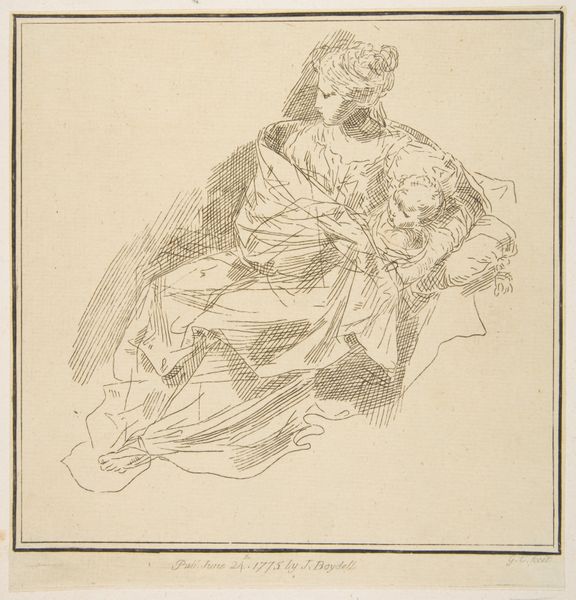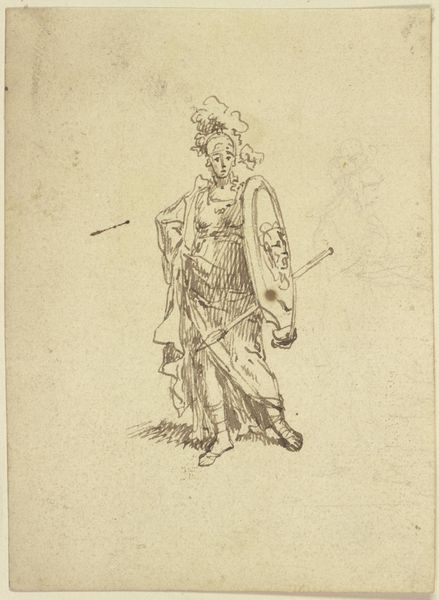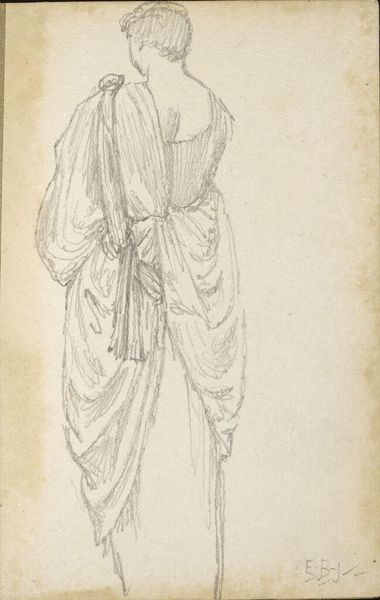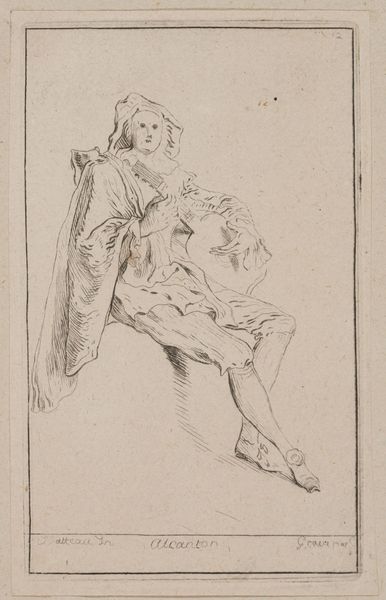
drawing, pencil
#
portrait
#
drawing
#
figuration
#
pencil
#
academic-art
#
rococo
Dimensions: 222 mm (height) x 174 mm (width) (bladmaal)
Peter Cramer created this drawing called Caroline Walter as Roxelane in Soliman II. sometime before 1782. It depicts a young woman dressed as Roxelane, the favorite consort and later wife of Suleiman the Magnificent, an Ottoman Sultan from the 16th century. The drawing invites us to consider how gender, power, and cultural identity intersect in the context of 18th-century Europe. Roxelane's story, rising from slavery to become a powerful figure in the Ottoman court, fascinated Europeans, who often exoticized and orientalized the Ottoman Empire. Caroline Walter’s costume and pose suggest a performance of power, but also highlight the limitations placed on women in European society at the time. Roxelane was admired by the Ottoman people, and a powerful figure, but by dressing up as her, Caroline is confined to a representation and is not able to excercise such agency herself. Consider how the act of dressing up allows for both an engagement with, and a distancing from, the realities of power and gender. What does it mean for a European woman to embody an Ottoman queen, and how does this performance reflect or challenge the social norms of her own time?
Comments
No comments
Be the first to comment and join the conversation on the ultimate creative platform.
